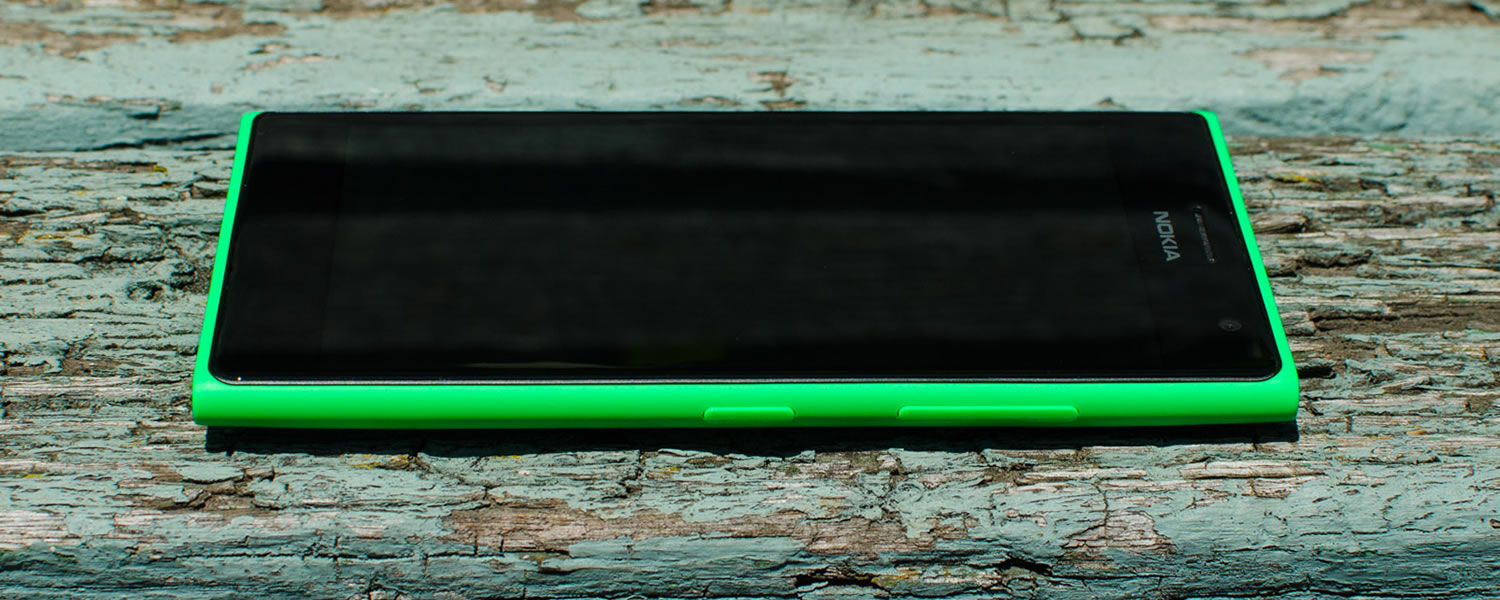Display: 4.7-inch AMOLED
As the Lumia 735 is a mid-range handset, there's nothing particularly amazing in the display department. Nokia has chosen a 4.7-inch AMOLED panel for this device, with a resolution of 1280 x 720 for 316 pixels per inch. It uses Nokia's 'ClearBlack' polarization filter technology, and features other stuff you'd expect like 'TrueColor' (24-bit reproduction for 16 million colors) and a 60 Hz refresh rate.
The natural attributes of AMOLED panels lead to great (infinite) contrast ratios, deep blacks and images which are extremely vibrant. While this isn't the best AMOLED I've used - the warmish nature of its color reproduction and oversaturation makes images lack a certain amount of depth - it's hardly meant to be competition for high-end devices like the Samsung Galaxy S5 and Motorola Moto X.
There is absolutely nothing wrong with the Lumia 735 display's resolution: 720p mostly delivers sharp text and crisp images with a good level of detail. 1080p could deliver a noticeable clarity improvement, but we are yet to see these sorts of panels shift down into the mid-range smartphone space. And even then, the Snapdragon 400 SoC inside this device is not suited for rendering to 1080p, though it performs well at 720p.
I should probably also mention that the Lumia 735 uses a PenTile subpixel matrix, which has a reduced subpixel-level resolution compared to LCDs that use a standard RGB stripe. Can you notice the difference? Only if you have keen eyes or look closely; it's unlikely that you'll notice the effects of the PenTile matrix without having something to compare it to, so I wouldn't worry about it.
One area that AMOLEDs have always struggled in is maximum brightness, which can be partly attributed to high power consumption at high brightness levels. While this aspect of AMOLED has improved over the past few years, companies still struggle to produce AMOLEDs with brightness levels comparable to top-end LCDs.
To combat this, most current devices packing AMOLEDs have some sort of brightness boosting feature that activates when you step out into the sun. I slammed Nokia's sunlight readability mode in the Lumia 930 for actually reducing the clarity of the display in some situations, but Nokia has clearly listened to this feedback, improving the mode significantly in their latest software edition that comes pre-installed on the Lumia 735.
Now, when the 735 is bathed in strong light, the phone analyses the content on the screen and boosts white levels when it determines it will improve visibility. It actually does a very good job of it, boosting whites when there's a lot of imagery on the screen, and applying a more conservative boost when the keyboard is displayed, for example. Combined with the ClearBlack technology I mentioned earlier, this is one of the easiest AMOLEDs to view in all conditions.
Although the Lumia 735 does a very good job of producing great-looking images, you can dive into the device's settings and alter its color profile if you so choose. There are a couple of presets, such as vivid and cool modes, though personally I would use the advanced mode to turn down the saturation slightly and move the temperature into the cool zone.
The 735 is the first device I've used with on-screen navigation buttons, which occupy a small strip at the bottom of the display and often disappear when not needed within an app. The space they occupy on the screen is less than with Android, but they're still very easy to hit without accidentally tapping on content at the bottom of the usable display area.
Like all of Nokia's Windows Phone handsets released recently, the Lumia 735 comes with a high sensitivity touchscreen mode that allows you to use the display with gloves on. It does consume more power than the standard sensitivity mode, and it is enabled by default, so unless you're wearing gloves I would recommend disabling the feature in the settings to conserve battery life.





